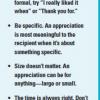|
|
Meeting Agenda #1: Start on Time Our society is founded on the importance of meetings, and it seems that the higher on the corporate ladder one climbs, the more meetings he must attend. Indeed, one of Michele Sliger's coworkers calculated that the amount of time she spends arranging meetings, getting to meetings, and in meetings equates to almost her entire workweek-thirty-six hours on average. Even though we may lose track of time in meetings, we all are painfully aware of the time we spend waiting for everyone to show up. In this column, Michele Sliger explains some of the tactics she's seen teams use to ensure that meetings start on time.
|
|
|
|
Eye on the Prize: Best Practices for Aligning Agile Efforts with Business Goals A phrase heard often in Agile discussions is "Let the product lead." Applied correctly, these four words powerfully focus an Agile team's energy directly on work that provides the highest business value. Deep focus on technology decisions breaks the line-of-sight with business goals, creates opportunities for over-engineering, and requires complex tracing activities, which ultimately slow the process.
|
|
|
|
Do You Work in IT? A self-professed latecomer to IT, Danny Faught has a new appreciation for the challenges faced when developing products for an internal customer rather than products for sale.
|
|
 |
Reap the Rewards of Recognition Everyone likes to feel as if her hard work and good deeds have been appreciated. In this installment of Management Chronicles we discover how the words "thank you" can become a powerful management tool.
|
|
|
|
An Outsource Model for Quality Assurance and Automated Testing Efficiency and effectiveness are the cornerstones of successful quality assurance and test automation effort. Jeff Beange describes how RBC Financial Group successfully implemented a quality assurance and automation outsourcing engagement, using a blended onshore/offshore approach. He describes the details of the engagement model and outlines the risks they encountered. Jeff describes their mitigation strategy, governance structure, and the metrics used to evaluate their implementation. Learn a communication strategy and automation framework you can use to implement automation using an outsourcing partnership. Find out what setup is required before any outsourcing model can be successful: detailed requirements, a complete set of test data, and a test lab that is accessible to all. Jeff describes the common pitfalls of offshore engagements and the three categories of outsourcing problems-people, process, and governance.
|
Jeff Somerville, RBC Financial Group
|
|
|
Mistakes Outsourcing Customers Make Ten years of experience with test outsourcing at Polteq Lucent Technologies has shown that it can be successful. However, on the way to success, many-and sometimes painful-lessons were learned. Kees Blokland shares the most common test outsourcing mistakes others have made with the hope that you will not repeat them. One key mistake is the expectation of large and rapid cost savings-many that have been seduced by this temptation have not been successful. Another mistake is to believe that the outsourcing vendor actually knows how to test your applications-just because they are far away doesn't mean they know your business. Kees presents a full list of outsourcing mistakes and discusses how you can prevent them from happening-or repair the damage if mistakes have already occurred. If you're planning to outsource testing or are in the middle of an outsourced project, you will find Kees' insight very useful.
|
Kees Blokland, POLTEQ IT Services BV
|
|
|
The Great Testers of our Time and Times Past What can today's software testers learn from present and past testing masters, many of whom have put their own lives on the line to make amazing contributions to the world in which we live? Clive Bates is thinking about testers such as Chuck Yeager, Yuri Gagarin, Andy Green, Leonardo da Vinci, and Isambard Kingdom Brunel. Isambard who? Isambard Kingdom Brunel was one of the greatest engineers in British history. A designer of bridges, tunnels, viaducts, docks, and ships, Brunel constantly battled resistance from established authorities, lack of adequate funding, changes in requirements, and project delays (sound familiar?). In researching the achievements of past testing masters, Clive has identified important traits and characteristics that made them successful. If we acknowledge and adopt these traits in our lives, we may become more successful in our work.
- The testing secrets of masters in other disciplines
|
Clive Bates, Grove Consultants
|
|
|
STAREAST 2007: The Nine Forgettings People forget things. Simple things like keys and passwords and the names of friends long ago. People forget more important things like passports and anniversaries and backing up data. But Lee Copeland is concerned with things that the testing community is forgetting-forgetting our beginnings, the grandfathers of formal testing and the contributions they made; forgetting organizational context, the reason we exist and where we fit in our company; forgetting to grow, to learn and practice the latest testing techniques; and forgetting process context, the reason that a process was first created but which may no longer exist. Join Lee for an explanation of the nine forgettings, the negative effects of each, and how we can use them to improve our testing, our organization, and ourselves.
|
Lee Copeland, Software Quality Engineering
|
|
|
How to Fake a Test Project It has never been easier to fool your manager into thinking that you're doing a great job testing! James Bach covers all of today's most respected test fakery. These techniques include: misleading test case metrics, vapid but impressive looking test documentation, repeatedly running old tests "just in case they find something," carefully maintaining obsolete tests, methodology doublespeak, endless tinkering with expensive test automation tools, and taking credit for a great product that would have been great even if no one had tested it. James covers best practices for blame deflection. By the time you're through, your executive management will not know whether to fire the programmers or the customers. But, you know it will not be you. (Disclaimer: It could be you if an outsourcing company fakes it more cheaply than you do.)
- Cautionary true stories of test fakery, both purposeful and accidental
|
James Bach, Satisfice Inc
|
 |
11 Ways Agile Adoptions Fail Usually, when Jean Tabaka lists practices, techniques, ideas, or recommendations about software development, she sticks with the number ten. It's nice and neat and has a fine history of enumeration cleanliness dating back to the Old Testament. But for agile adoption failures, Jean thinks it is time to invoke some Spinal Tap and go to eleven. Here are her top eleven signs that your agile adoption is headed down a slippery slope to failure.
|
|

